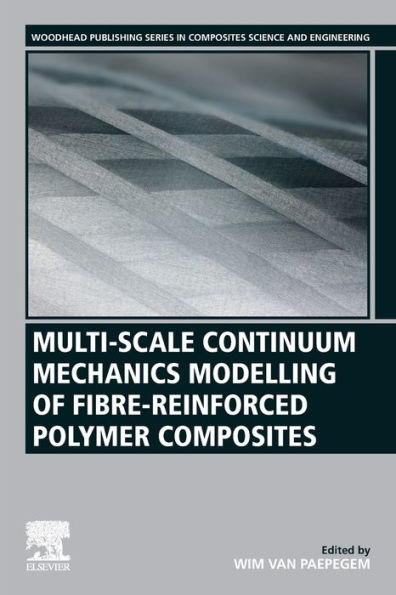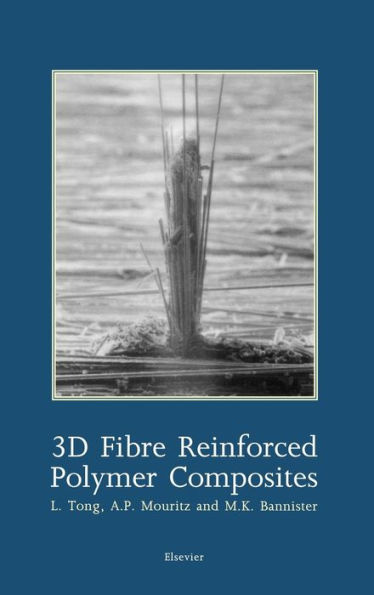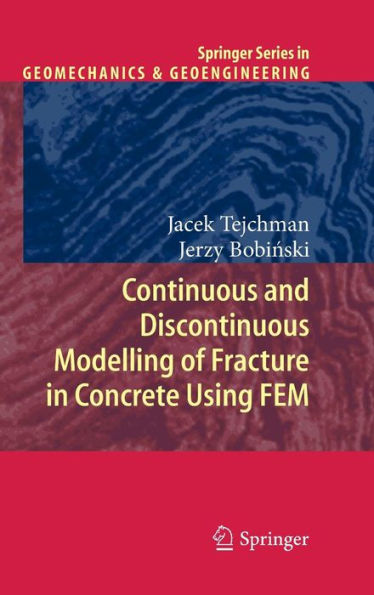Home
Multi-Scale Continuum Mechanics Modelling of Fibre-Reinforced Polymer Composites
Barnes and Noble
Multi-Scale Continuum Mechanics Modelling of Fibre-Reinforced Polymer Composites
Current price: $350.00


Barnes and Noble
Multi-Scale Continuum Mechanics Modelling of Fibre-Reinforced Polymer Composites
Current price: $350.00
Size: OS
Loading Inventory...
*Product information may vary - to confirm product availability, pricing, shipping and return information please contact Barnes and Noble
Multi-scale modelling of composites is a very relevant topic in composites science. This is illustrated by the numerous sessions in the recent European and International Conferences on Composite Materials, but also by the fast developments in multi-scale modelling software tools, developed by large industrial players such as Siemens (Virtual Material Characterization toolkit and MultiMechanics virtual testing software), MSC/e-Xstream (Digimat software), Simulia (micromechanics plug-in in Abaqus), HyperSizer (Multi-scale design of composites), Altair (Altair Multiscale Designer)
This book is intended to be an ideal reference on the latest advances in multi-scale modelling of fibre-reinforced polymer composites, that is accessible for both (young) researchers and end users of modelling software. We target three main groups:
This book aims at a complete introduction and overview of the state-of-the-art in multi-scale modelling of composites in three axes:
• ranging from prediction of homogenized elastic properties to nonlinear material behaviour
• ranging from geometrical models for random packing of unidirectional fibres over meso-scale geometries for textile composites to orientation tensors for short fibre composites
• ranging from damage modelling of unidirectionally reinforced composites over textile composites to short fibre-reinforced composites
The book covers the three most important scales in multi-scale modelling of composites: (i) micro-scale, (ii) meso-scale and (iii) macro-scale. The nano-scale and related atomistic and molecular modelling approaches are deliberately excluded, since the book wants to focus on continuum mechanics and there are already a lot of dedicated books about polymer nanocomposites.
A strong focus is put on physics-based damage modelling, in the sense that the chapters devote attention to modelling the different damage mechanisms (matrix cracking, fibre/matrix debonding, delamination, fibre fracture,…) in such a way that the underlying physics of the initiation and growth of these damage modes is respected.
The book also gives room to not only discuss the finite element based approaches for multi-scale modelling, but also much faster methods that are popular in industrial software, such as Mean Field Homogenization methods (based on Mori-Tanaka and Eshelby solutions) and variational methods (shear lag theory and more advanced theories).
Since the book targets a wide audience, the focus is put on the most common numerical approaches that are used in multi-scale modelling. Very specialized numerical methods like peridynamics modelling, Material Point Method, eXtended Finite Element Method (XFEM), isogeometric analysis, SPH (Smoothed Particle Hydrodynamics),… are excluded.
Outline of the book
The book is divided in three large parts, well balanced with each a similar number of chapters:
Part I deals with all "ingredients" to start with multi-scale modelling, limited to elastic property prediction. This typically includes: (i) setting up your geometrical model at micro- or meso-scale (definition of Representative Volume Element (RVE) or Repeating Unit Cell (RUC)), (ii) definition of periodic boundary conditions, (iii) homogenization of the elastic properties, starting from the elastic properties of the constituents, (iv) importance of statistical representation of geometry and stochastic nature of fibre architecture. This should bring all readers at the same level of principles and terminology for multi-scale modelling. Advanced users could eventually skip this first part.
Part II deals with nonlinear multi-scale modelling. We build further upon the ingredients from Part I, but now add all kinds of nonlinearities to the simulation at micro- or meso-scale (matrix cracking, delamination, fibre/matrix debonding, delamination, fibre failure, visco-elasto-plasticity-damage of the polymer matrix,…). Not only finite element based techniques are covered, but also much faster inclusion methods (Mori-Tanaka, Eshelby,…) and variational methods.
Part III deals with the laminate scale or macro-scale, where all these multi-scale modelling tools are applied for macro-scale ply-based modelling and virtual testing of laminates (in static loading, but also sometimes for prediction of fatigue, post-impact strength,…).
In all three parts, the main three types of fibre reinforcement are covered (unidirectionally reinforced composites, textile composites and short fibre composites).
The chapters are written by leading authorities from academia, and each chapter gives a self-contained overview of a specific topic, covering the state-of-the-art and future research challenges.
This book is intended to be an ideal reference on the latest advances in multi-scale modelling of fibre-reinforced polymer composites, that is accessible for both (young) researchers and end users of modelling software. We target three main groups:
This book aims at a complete introduction and overview of the state-of-the-art in multi-scale modelling of composites in three axes:
• ranging from prediction of homogenized elastic properties to nonlinear material behaviour
• ranging from geometrical models for random packing of unidirectional fibres over meso-scale geometries for textile composites to orientation tensors for short fibre composites
• ranging from damage modelling of unidirectionally reinforced composites over textile composites to short fibre-reinforced composites
The book covers the three most important scales in multi-scale modelling of composites: (i) micro-scale, (ii) meso-scale and (iii) macro-scale. The nano-scale and related atomistic and molecular modelling approaches are deliberately excluded, since the book wants to focus on continuum mechanics and there are already a lot of dedicated books about polymer nanocomposites.
A strong focus is put on physics-based damage modelling, in the sense that the chapters devote attention to modelling the different damage mechanisms (matrix cracking, fibre/matrix debonding, delamination, fibre fracture,…) in such a way that the underlying physics of the initiation and growth of these damage modes is respected.
The book also gives room to not only discuss the finite element based approaches for multi-scale modelling, but also much faster methods that are popular in industrial software, such as Mean Field Homogenization methods (based on Mori-Tanaka and Eshelby solutions) and variational methods (shear lag theory and more advanced theories).
Since the book targets a wide audience, the focus is put on the most common numerical approaches that are used in multi-scale modelling. Very specialized numerical methods like peridynamics modelling, Material Point Method, eXtended Finite Element Method (XFEM), isogeometric analysis, SPH (Smoothed Particle Hydrodynamics),… are excluded.
Outline of the book
The book is divided in three large parts, well balanced with each a similar number of chapters:
Part I deals with all "ingredients" to start with multi-scale modelling, limited to elastic property prediction. This typically includes: (i) setting up your geometrical model at micro- or meso-scale (definition of Representative Volume Element (RVE) or Repeating Unit Cell (RUC)), (ii) definition of periodic boundary conditions, (iii) homogenization of the elastic properties, starting from the elastic properties of the constituents, (iv) importance of statistical representation of geometry and stochastic nature of fibre architecture. This should bring all readers at the same level of principles and terminology for multi-scale modelling. Advanced users could eventually skip this first part.
Part II deals with nonlinear multi-scale modelling. We build further upon the ingredients from Part I, but now add all kinds of nonlinearities to the simulation at micro- or meso-scale (matrix cracking, delamination, fibre/matrix debonding, delamination, fibre failure, visco-elasto-plasticity-damage of the polymer matrix,…). Not only finite element based techniques are covered, but also much faster inclusion methods (Mori-Tanaka, Eshelby,…) and variational methods.
Part III deals with the laminate scale or macro-scale, where all these multi-scale modelling tools are applied for macro-scale ply-based modelling and virtual testing of laminates (in static loading, but also sometimes for prediction of fatigue, post-impact strength,…).
In all three parts, the main three types of fibre reinforcement are covered (unidirectionally reinforced composites, textile composites and short fibre composites).
The chapters are written by leading authorities from academia, and each chapter gives a self-contained overview of a specific topic, covering the state-of-the-art and future research challenges.








